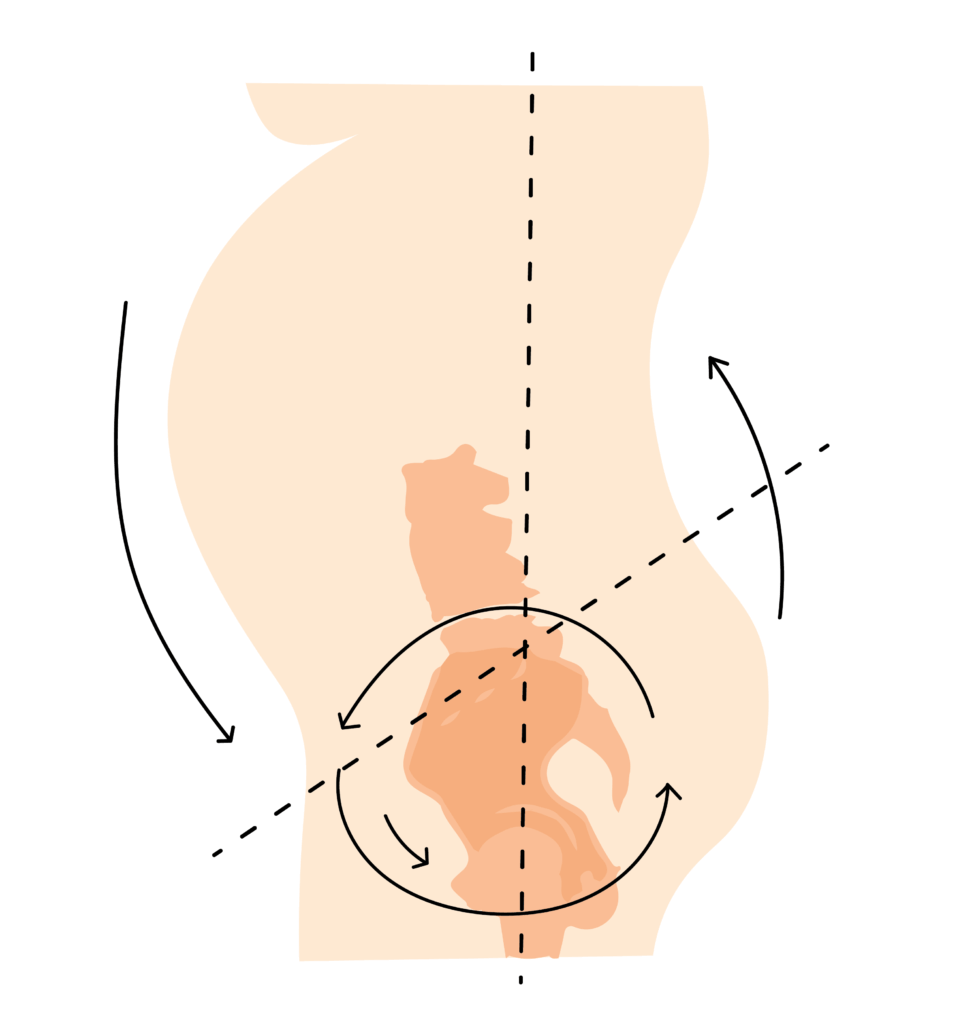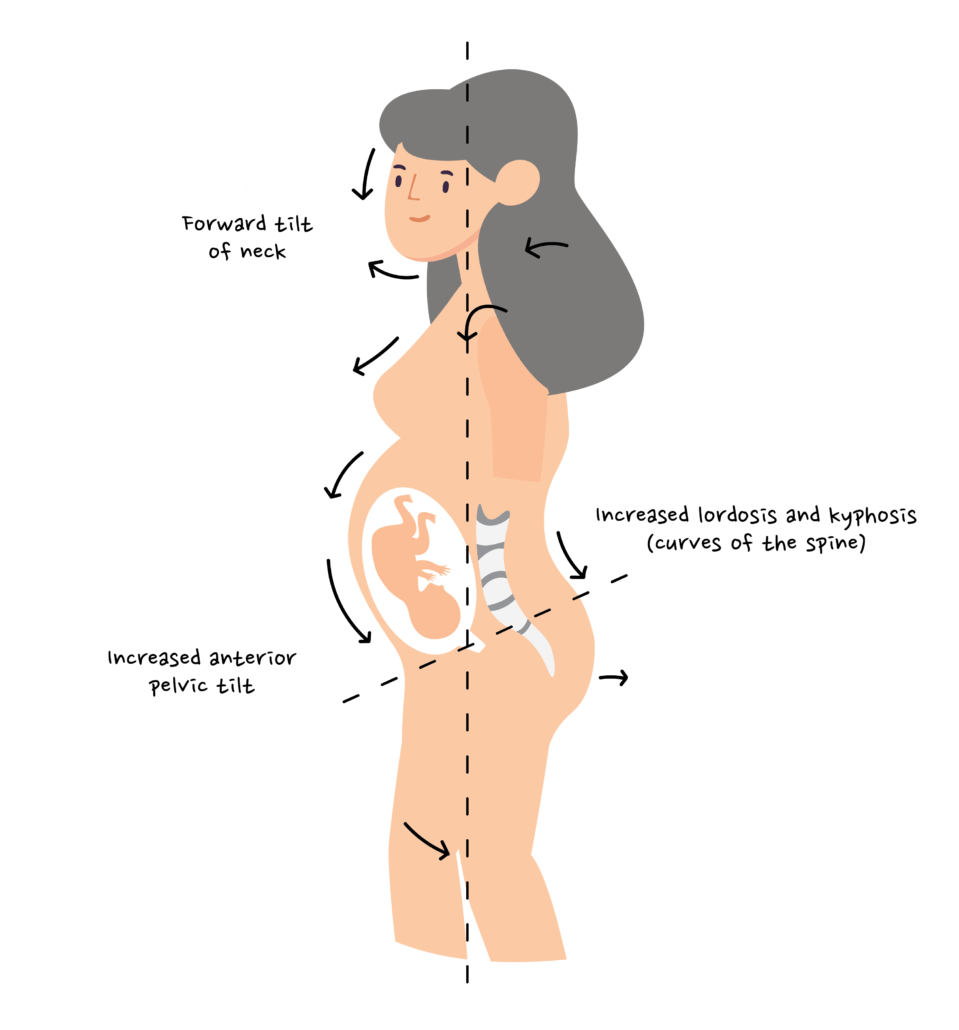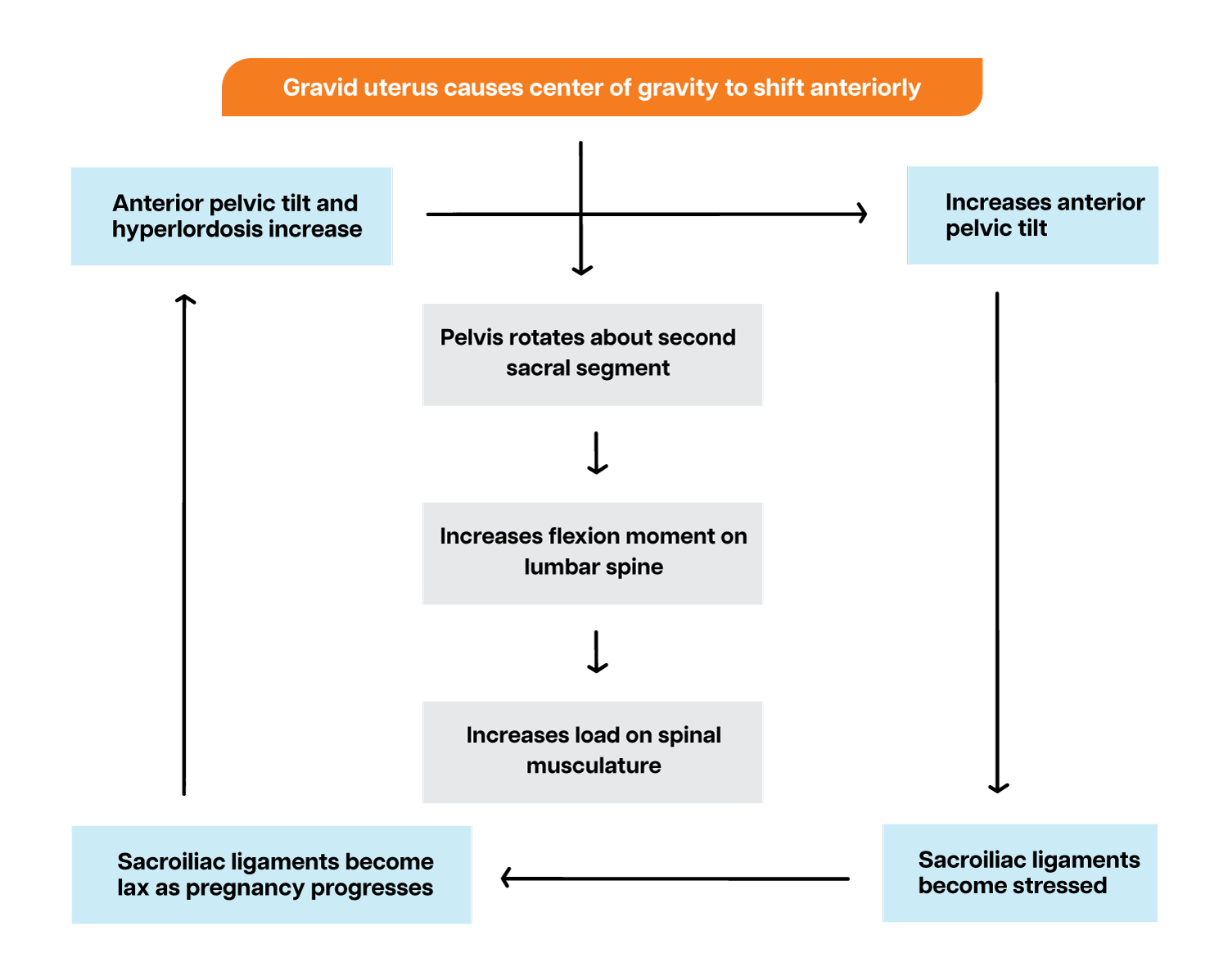A goal leading to improving motion analysis and therapy
Pregnancy profoundly impacts the human body, especially its musculoskeletal system. Changes in hormones induce loosening of ligaments, weight gain, and a shift in the body’s center of gravity, leading to an exaggerated arching of the lower spine and forward tilting of the pelvis. Additionally, alterations in the vascular system can disrupt the metabolic supply to the lower back. Among the most prevalent musculoskeletal issues during pregnancy is lower back pain [1]. This type of discomfort typically begins in the second trimester, typically around the 22nd week of pregnancy [2]. It’s estimated that approximately 56% of pregnant individuals experience lower back pain at some stage during their pregnancy. These effects likely stem from various hormonal and biomechanical changes that occur throughout pregnancy. As the uterus expands, it stretches and weakens the abdominal muscles, thereby imposing extra strain on the lumbar muscles, which must compensate for the weakened abdominal support [3,4]. Consequently, this compensation leads to an exaggerated arching of the lower spine as the woman’s center of gravity shifts forward due to the enlarging uterus. This shifting results in increased bending forces on the lumbar spine, leading to heightened strain on the supporting muscles.

Most importantly, easy birth is supported by preventing muscle shortness in pregnant women, providing flexibility, and protecting physical health. Consequently, preventing physical immobility and increasing mobility in this group is a priority.

The pregnancy process has physical, cultural, and biopsychosocial dimensions.
- Pregnancy induces significant physiological changes within a woman’s body, impacting not only the cardiovascular, endocrine, and renal systems but also the musculoskeletal system, with particular emphasis on the axial skeleton. This phenomenon is marked by distinct hormonal fluctuations, alongside an augmentation in body mass and the presence of the gravid uterus, culminating in a shift in the center of gravity. Consequently, additional static and dynamic loads are imposed on the axial skeleton [5,6].
- Postural alterations represent prevalent issues among pregnant women, often leading to the manifestation of low back pain (Figure 1). The burgeoning fetus imposes heightened stress upon postural muscles [6]. This physiological process is characterized by a forward and upward shift in the center of gravity, concomitant with adjustments in spinal curvature, such as lordosis and kyphosis, aimed at compensating for and preserving stability. Consequently, this engenders considerable strain upon the lower back and further perturbs the center of gravity.
- The attenuation of abdominal muscle strength during pregnancy, attributed to elevated concentrations of relaxin and progesterone—both of which promote muscle relaxation—or resulting from muscular overextension due to increased abdominal dimensions, is hypothesized to contribute to the amplification of anterior pelvic tilt (Table 1). [7].
- Although biological and psychosocial factors such as changes in the environment, isolation, loneliness and changes in body image, physical inactivity, and malnutrition show cultural differences, the changes brought about by the pregnancy process will be examined under a common heading.
- Emotional fluctuations during pregnancy are commonplace occurrences. These changes typically manifest as ambivalence and frequent mood swings, encompassing a spectrum of emotions ranging from anxiety, fatigue, and exhaustion to somnolence, depressive reactions, and excitement. [8]

During pregnancy process, a person needs the support of a physiotherapist, dietician, psychologist, family, and/or friends. The multidisciplinary health team works together to support physical health and emotional condition, to ensure that the pregnant women feel healthy, to maintain daily life activities, and to increase physical activity level by the biopsychosocial realm.
Low back pain is also a problem that can continue in the postpartum period and affects the quality of life of the women. Chronic postpartum low back pain is defined as low back pain that begins within 3 months after birth and lasts for at least 6 weeks. It mostly involves the lumbar spine and sacroiliac joints.Postpartum lower back pain is associated with many factors, including a history of lower back pain during pregnancy, young age, and excess body weight; New back pain after birth is caused by excess weight and short height compared to weight. Additionally, postpartum lower back or pelvic pain includes pregnancy-related muscle weakness and breast-feeding-related spinal osteoporosis. Commonly encountered in this demographic are various potential diagnoses, which include but are not confined to spinal or hip arthritis, sciatica, osteitis pubis, lumbar disc pathology, and spondylolisthesis. Additionally, less frequent considerations encompass urinary tract infection, lumbar stenosis, femoral venous thrombosis, osteomyelitis, cauda equina syndrome, or ruptured symphysis pubis. (9,10)
The concept of this course is designed to demonstrate physiotherapy approaches for prepartum and postpartum women, highlight red flags for exercise, and strengthen interdisciplinary communication. Approaches to the biological and psychosocial changes brought about by the pregnancy process are presented and reviewed. In this training module, therapeutic approaches to effectively increase physical activity in women in the prepartum and postpartum period will be demonstrated.


Leave a Reply
Want to join the discussion?Feel free to contribute!